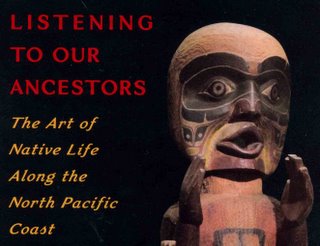
I took my free morning and walked down to the Mall to visit the Smithsonian. Overnight, about six inches of snow had fallen, though only three or four inches stuck around the hotel. I'd heard that DC has had trouble with snow removal, but I didn't see any evidence of that today. The streets were clear and there were usable sidewalks the whole way.
On the way, I went a little out of my way to complete a task I'd set myself last fall, when we'd visited Vancouver for a weekend. On the way out of town, we detoured to the airport to see Bill Reid's Spirit of the Haida Gwaii sculpture. It's a wonderful, monumental work, in a dark, jade green. And there's another casting, in black, at the Canadian Embassy, along Pennsylvania Ave. Today, it was covered in snow. The viewing is better in Vancouver, where it's placed in the center of a little amphitheater. Here's is poked into the corner of the courtyard, with rails around it. Still, it's a beautiful, powerful work and I was happy to have seen it again, anew.
Then, I went to the Smithsonian National Museum of the American Indian to see the exhibit of North Pacific Coast peoples. I first visited this new museum last year and I was very impressed. The previous Smithsonian exhibits of Native American articles I'd seen, in the Natural History museum, were hideous.
My favorite museum is the Makah Museum, which I had the chance to visit twice, when my kids were in fifth grade, thanks to Mr. Hickle. I love this little museum because it was built by the people descended from those whose artifacts are preserved and presented in it. I found it beautiful that the articles were described using the words "ours" and "us."
Something of this spirit is retained in the exhibits in the National Museum. The exhibits, in general and in the case of this exhibit of North Pacific Coast peoples, are developed in cooperation with the people's themselves. Visitors might come away realizing that they have missed the "overview" -- the map of the "tribes" and their distribution before so many of them were wiped out. Small loss, in my opinion, when compared against the vitality and real understanding that comes from the people telling their own, distinct stories. Wonderful exhibit in a beautiful building.
No comments:
Post a Comment